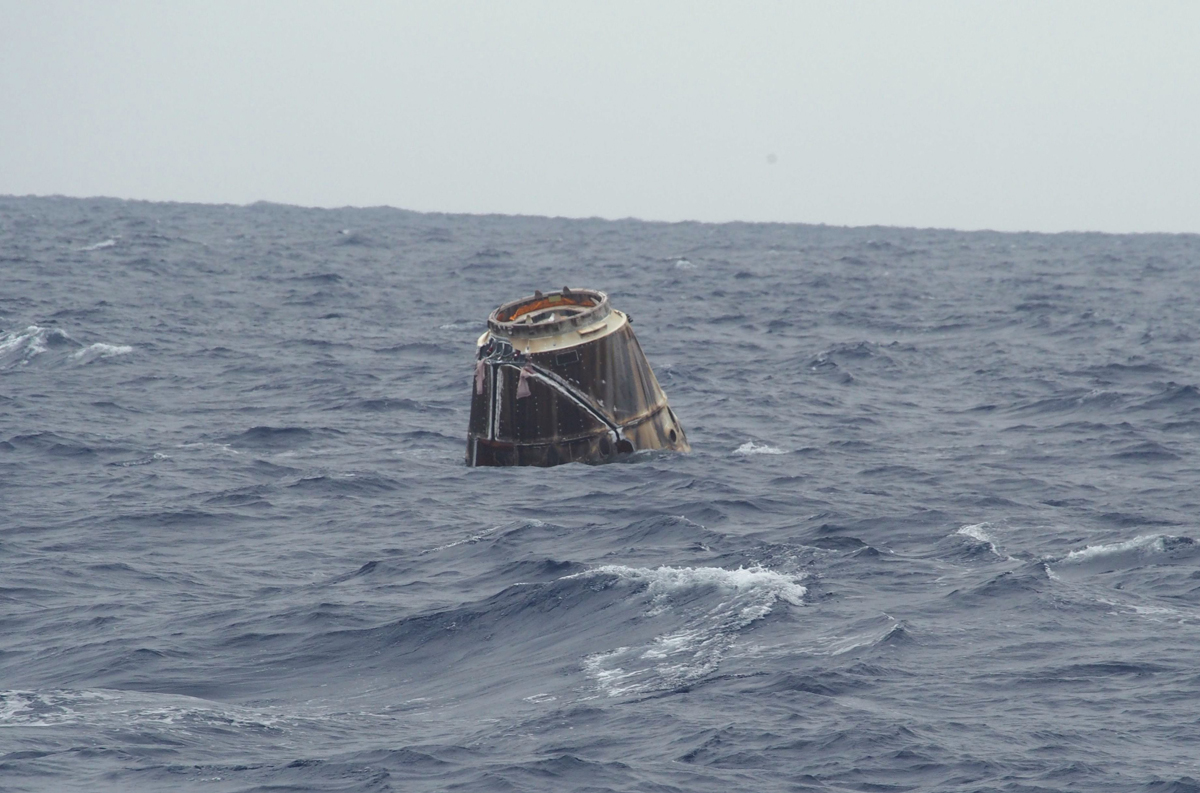SpaceX Dragon Cargo Craft Splashes Down in Pacific Ocean
A SpaceX Dragon cargo ship returned to Earth today (Sept. 17) after a one-month stay at the International Space Station. At 10:16 a.m. EDT (1416 GMT), the Dragon splashed down in the Pacific Ocean loaded with more than 3,800 lbs. (1,700 kilograms) of cargo.
NASA astronaut Randy Bresnik and the European Space Agency's Paolo Nespoli released the Dragon from the Harmony module early this morning, at 4:47 a.m. EDT (0847 GMT), using the Canadarm2 robotic arm. The Dragon then fired its thrusters to separate from the space station.
Once the Dragon spacecraft was a safe distance from the orbiting laboratory, SpaceX flight controllers in Hawthorne, California, sent the command for the Dragon to begin its deorbit burn. Roughly 5.5 hours later, the Dragon splashed down off the coast of Baja, California, where SpaceX personnel aboard a recovery vessel picked up the spacecraft to bring it back to a shipping port near Los Angeles. [Gallery: Dragon, SpaceX's Private Spacecraft]
The Dragon arrived at the space station on Aug. 16 packed with more than 6,400 lbs. (2,900 kg) of food, supplies and science experiments for the Expedition 52 crew. Science equipment on board included a protein-crystal growth experiment to research a new treatment for Parkinson's disease, another experiment for growing lung tissue from stem cells and 20 mice that would demonstrate the physiological effects of spaceflight. NASA also sent up some ice cream for the astronauts.
For the vessel's return trip, the crew loaded the Dragon with "science samples from human and animal research, biology and biotechnology studies, physical science investigations, and education activities," NASA officials said in a statement.

"NASA and the Center for the Advancement of Science in Space (CASIS), the nonprofit organization that manages research aboard the U.S. national laboratory portion of the space station, will receive time-sensitive samples and begin working with researchers to process and distribute them within 48 hours of splashdown," the statement said.
This was the 12th contracted cargo resupply mission (CRS-12) for SpaceX. While this was a brand-new Dragon capsule at the time of launch, SpaceX officials said they plan to launch only used cargo spacecraft to the space station from now on. This was the last new Dragon to deliver cargo to the space station.
Get the Space.com Newsletter
Breaking space news, the latest updates on rocket launches, skywatching events and more!
Email Hanneke Weitering at hweitering@space.com or follow her @hannekescience. Follow us @Spacedotcom, Facebookand Google+. Original article on Space.com.
Join our Space Forums to keep talking space on the latest missions, night sky and more! And if you have a news tip, correction or comment, let us know at: community@space.com.

Hanneke Weitering is a multimedia journalist in the Pacific Northwest reporting on the future of aviation at FutureFlight.aero and Aviation International News and was previously the Editor for Spaceflight and Astronomy news here at Space.com. As an editor with over 10 years of experience in science journalism she has previously written for Scholastic Classroom Magazines, MedPage Today and The Joint Institute for Computational Sciences at Oak Ridge National Laboratory. After studying physics at the University of Tennessee in her hometown of Knoxville, she earned her graduate degree in Science, Health and Environmental Reporting (SHERP) from New York University. Hanneke joined the Space.com team in 2016 as a staff writer and producer, covering topics including spaceflight and astronomy. She currently lives in Seattle, home of the Space Needle, with her cat and two snakes. In her spare time, Hanneke enjoys exploring the Rocky Mountains, basking in nature and looking for dark skies to gaze at the cosmos.









